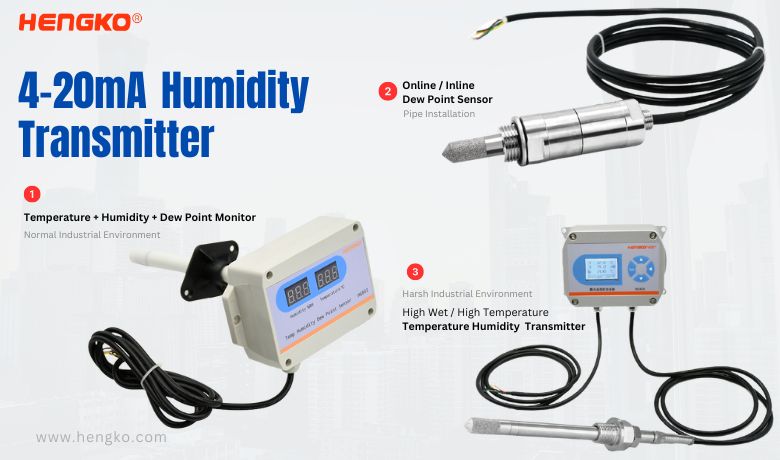-
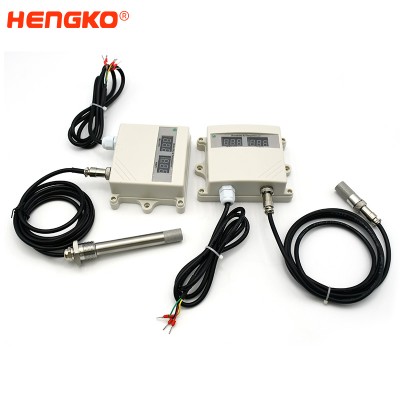
4-20mA Temperature and humidity sensor with PLC Realize Temperature control
Achieve Optimal Injection Molding Results with our Advanced Dehumidification System! In injection molding operations, achieving low mold coolant temperatures...
View Detail -
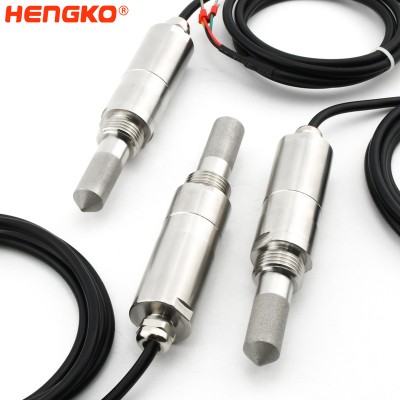
HG-602 Dew Point Sensor Transmitter for Industrial Drying Processes
With its compact design and durable stainless steel housing, the HG-602 industrial dew point transmitter provides accurate and reliable measurement data. It...
View Detail -

Industrial Dew Point Sensor Transmitter for Industrial Drying Processes with display
Industrial Dew Point Transmitter with Display – HG602 For Accurate and Reliable Humidity & Dew Point Measurement in Industrial Drying Processes The HENG...
View Detail -

Industrial Dew Point Sensor Transmitter for Compressed Air Drying Systems with Display ...
Industrial Dew Point Transmitter with Display – HG602 For Accurate and Reliable Humidity & Dew Point Measurement in Industrial Drying Processes The HENG...
View Detail -
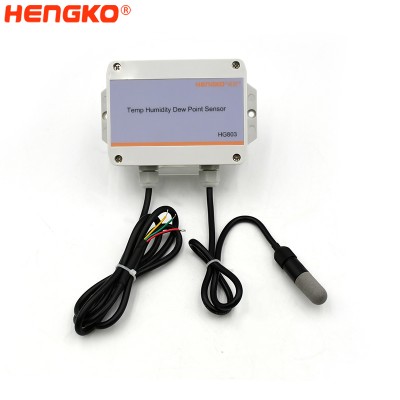
HG803 IP67 Relative Humidity and Temperature Transmitter Wholesale
The HG803 Split Series Temperature and Humidity Transmitter is an advanced, industrial-grade solution designed for precise and reliable environmental monitor...
View Detail -
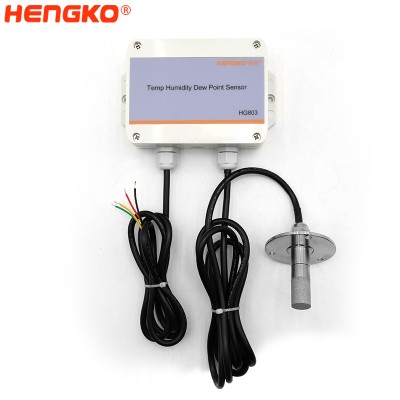
Temperature and Humidity Monitor for IoT Applications HG803 Humidity Sensor
Product Describe HG803 Series Temperature and Humidity Monitor has been designed to measure, monitor and record temperature and humidity. It is a perfect so...
View Detail -
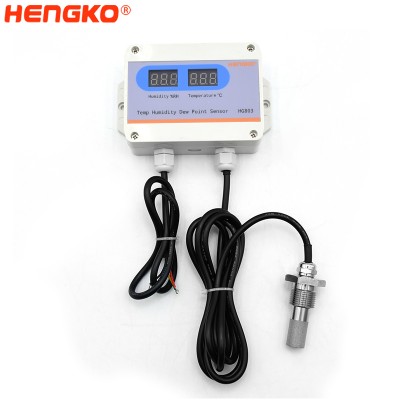
HG803 remote temperature and relative humidity transmitter with porous humidity probe p...
Product Describe HG803 Series Temperature and Humidity Monitor has been designed to measure, monitor and record temperature and humidity. It is a perfect sol...
View Detail -
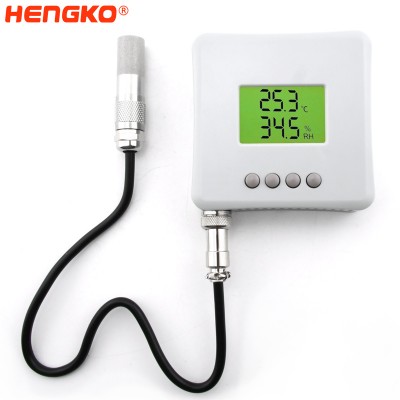
RHTX 4-20mA RS485 temperature humidity transmitter for greenhouse
HT802P is a Humidity and Temperature Sensor, with two channels outputting 4mA to 20mA / RS485 Modbus of humidity and temperature transmitter, and has an LCD...
View Detail -
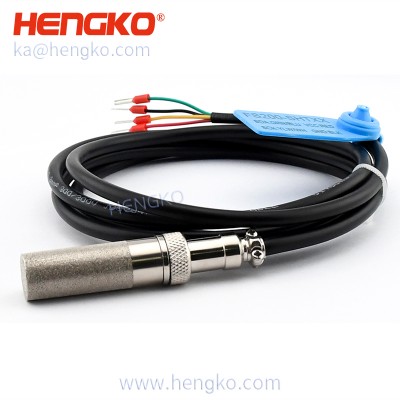
Large air permeability I2C temperature and humidity sensor probe (RHT series) with IP65...
HENGKO digital temperature and humidity module adopt high precision RHT series sensor equipped with a sintered metal filter shell for large air permeability,...
View Detail -
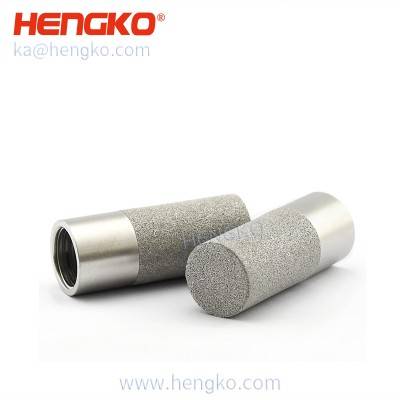
HK45MEU stainless steel sintered sensor probe housing used for 4-20mA temperature and h...
HENGKO stainless steel sensor shells are made by sintering 316L powder material at high temperatures. They have been widely used in environmental protection,...
View Detail -
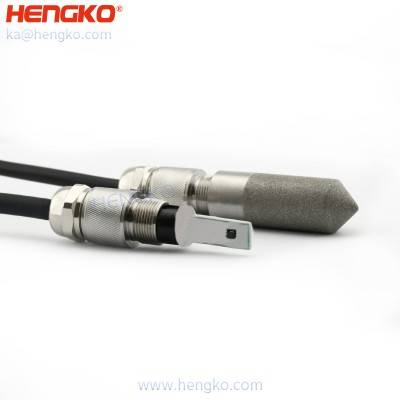
Digital 4-20ma outdoor egg incubator temperature humidity controller sintered metal RH...
HENGKO temperature and humidity sensors can be applied in various fields: telepoint base stations, electronic control cabinets, production sites, storehouses...
View Detail -
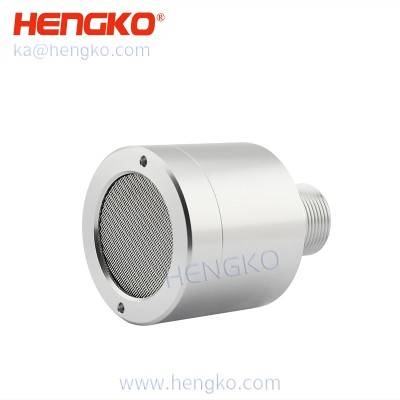
4-20mA Infrared CH4 CO2 gas sensor ( carbon dioxide sensor ) detector aluminum alloy ho...
Stainless steel housing with tamperproof protection. For use with separately certified, industry-standard junction boxes or OEM gas detector enclosures. ...
View Detail -
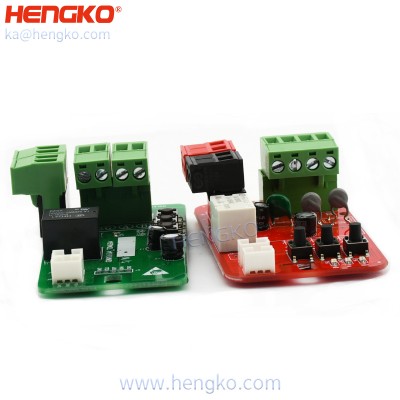
Explosive 4-20mA analog Interface LPG chlorine ch4 combustible toxic gas sensor pinted ...
HENGKO gas sensor detector/alarm is a kind of intelligent digitalgas sensor device, which provides comprehensive monitoring of combustible, toxic gas hazards...
View Detail -
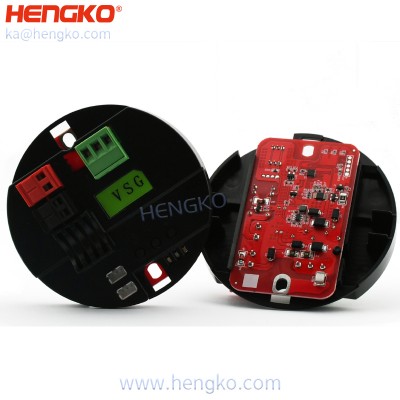
Industrial 4-20mA chorine flammable natural gas leak detector sensor PCB board assembl...
HENGKO pcb(printed circuit board) for gas sensor is a high pricision electronic component.When there is gas existing,the gas concentration signal at the moni...
View Detail
Main Features of 4-20ma Humidity Sensor ?
The main features of a 4-20mA humidity sensor are as follows:
1. Analog Output:
It provides a standardized 4-20mA current signal, allowing easy integration with various control systems and data loggers.
2. Wide Measurement Range:
Capable of accurately measuring humidity across a broad range, enabling its use in diverse environments.
3. High Accuracy:
Ensures precise and reliable humidity readings, critical for maintaining optimal conditions in industrial processes.
4. Low Power Consumption:
Consumes minimal power, making it energy-efficient and suitable for long-term applications.
5. Robust and Durable:
Designed to withstand harsh conditions, ensuring prolonged operational life in challenging industrial settings.
6. Easy Installation:
Simple to set up and install, reducing downtime during the implementation process.
7. Minimal Maintenance:
Requires little maintenance, reducing overall operational costs.
8. Compatibility:
Compatible with various industrial applications, including HVAC systems, environmental monitoring, and process control.
9. Rapid Response Time:
Provides real-time humidity data, enabling swift response to changes in environmental conditions.
10. Cost-Effective:
Offers a cost-effective solution for accurate humidity measurement, providing value for money.
Overall, the 4-20mA humidity sensor is a reliable and versatile device, indispensable for precise humidity
monitoring in different industrial processes and applications.
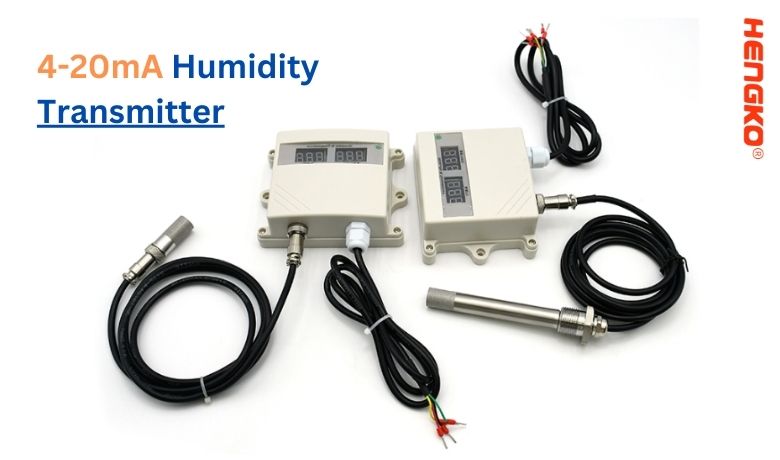
Why Use 4-20mA output , Not Use RS485 ?
As You Know Using a 4-20mA output and RS485 communication are both common methods for
transmitting data from sensors and instruments, but they serve different purposes and offer distinct advantages:
1. Simplicity and Robustness:
4-20mA current loop is a simple analog signal that requires only two wires for communication. It is less
susceptible to noise and interference, making it highly robust and suitable for harsh industrial environments
where electrical noise is prevalent.
2. Long Cable Runs:
4-20mA signals can travel over long cable runs without significant signal degradation. This makes it ideal
for installations where sensors are located far from the control system or data acquisition equipment.
3. Compatibility:
Many legacy control systems and older equipment are designed to work with 4-20mA signals. Retrofitting
such systems with RS485 communication may require additional hardware and software changes, which can
be costly and time-consuming.
4. Inherent Current Loop Power:
The 4-20mA current loop can power the sensor itself, eliminating the need for a separate power supply at
the sensor location. This feature simplifies wiring and reduces overall system complexity.
5. Real-time Data:
With 4-20mA, data transmission is continuous and real-time, which is crucial for certain control applications
where immediate responses to changing conditions are necessary.
On the other hand, RS485 communication has its own advantages, such as supporting bidirectional communication,
enabling multiple devices on the same bus, and providing more data flexibility. RS485 is commonly used for digital
communication between devices, offering higher data rates and more extensive data exchange capabilities.
Ultimately, the choice between 4-20mA and RS485 depends on the specific application, the existing infrastructure,
and the requirements for noise immunity, data rates, and compatibility with the control and data acquisition systems.
Each method has its strengths and weaknesses, and engineers select the most appropriate option based on the
unique needs of the system they are designing.
What You Should Consider When Choose 4-20ma
Humidity Sensor for Your Humidity Monitor Project ?
When choosing a 4-20mA humidity sensor for your humidity monitor project, several factors should be considered to ensure the sensor meets the project's requirements and provides accurate and reliable data:
1. Accuracy and Precision:
Look for a sensor with high accuracy and precision to ensure the humidity readings are reliable and trustworthy.
2. Measurement Range:
Consider the humidity range that the sensor can measure effectively. Choose a sensor that covers the humidity levels relevant to your specific application.
3. Response Time:
Depending on your monitoring needs, the sensor should have a response time suitable for the dynamics of the humidity changes in your environment.
4. Environmental Conditions:
Ensure the sensor is suitable for the environmental conditions it will be exposed to, such as temperature extremes, dust, moisture, and other factors that may affect its performance.
5. Calibration and Stability:
Check if the sensor requires regular calibration and how stable its readings are over time. A stable sensor reduces maintenance efforts and ensures long-term accuracy.
6. Output Signal:
Confirm that the sensor provides a 4-20mA output signal compatible with your monitoring system or data acquisition equipment.
7. Power Supply:
Verify the power requirements of the sensor and ensure it aligns with the available power sources in your project.
8. Physical Size and Mounting Options:
Consider the physical size of the sensor and available mounting options to ensure it fits within your monitoring setup.
9. Certifications and Standards:
Check if the sensor meets relevant industry standards and certifications to ensure its quality and compliance.
10. Manufacturer Reputation:
Choose a sensor from a reputable and reliable manufacturer with a track record of producing high-quality sensors.
11. Support and Documentation:
Ensure the manufacturer provides adequate technical support and documentation for the sensor's installation, calibration, and operation.
12. Cost:
Consider the budget for your project and find a sensor that provides the required features and performance without exceeding your budget.
By carefully considering these factors, you can select the most suitable 4-20mA humidity sensor that meets the specific needs of your humidity monitor project, ensuring accurate and consistent monitoring of humidity levels in your application.
Main Applications of 4-20ma Humidity Sensor
The main applications of 4-20mA humidity sensors include:
1. HVAC Systems:
Monitoring and controlling humidity levels in heating, ventilation, and air conditioning systems to ensure optimal indoor air quality and occupant comfort.
2. Environmental Monitoring:
Deployed in weather stations, greenhouse management, and agricultural applications to monitor and regulate humidity for crop growth and environmental conditions.
3. Clean Rooms and Laboratories:
Maintaining precise humidity levels in controlled environments for research, pharmaceutical production, semiconductor manufacturing, and other sensitive processes.
4. Data Centers:
Monitoring humidity to prevent damage to electronic equipment and maintain stable operating conditions.
5. Industrial Processes:
Ensuring appropriate humidity levels in manufacturing processes to optimize product quality, prevent moisture-related issues, and support industrial automation.
6. Drying and Dehumidification:
Used in industrial dryers and dehumidifiers to regulate humidity levels during material processing and storage.
7. Pharmaceutical Storage:
Monitoring humidity in drug storage facilities to preserve the integrity and stability of medications and pharmaceutical products.
8. Museums and Archives:
Preserving valuable artifacts, historical documents, and art by controlling humidity to prevent degradation and damage.
9. Greenhouses:
Creating the ideal environment for plant growth by maintaining specific humidity levels, especially for delicate and exotic plants.
10. Indoor Air Quality (IAQ) Monitoring:
Ensuring healthy and comfortable living and working conditions by measuring humidity in residential and commercial buildings.
These diverse applications demonstrate the importance of 4-20mA humidity sensors in maintaining optimal humidity levels across various industries, processes, and environmental settings.
FAQs
1. What is a 4-20mA humidity sensor, and how does it work?
A 4-20mA humidity sensor is a type of sensor that measures relative humidity in the air and outputs the data as an analog current signal, where 4mA represents the minimum humidity value (e.g., 0% RH), and 20mA represents the maximum humidity value (e.g., 100% RH). The sensor's working principle involves a humidity-sensing element, such as a capacitive or resistive element, which changes its electrical properties based on the humidity level. This change is then converted into a proportional current signal, allowing for easy integration with various control systems and data loggers.
2. What are the key advantages of using a 4-20mA humidity sensor over other types of humidity sensors?
4-20mA humidity sensors offer several advantages, including:
- Noise Immunity: They are less susceptible to electrical noise, making them robust in industrial environments with high interference.
- Long Cable Runs: 4-20mA signals can travel long distances without significant signal degradation, making them suitable for remote installations.
- Compatibility: Many existing control systems are designed to work with 4-20mA signals, making integration easier.
- Real-time Data: They provide continuous, real-time data, enabling swift responses to changing humidity conditions.
- Power Efficiency: These sensors can power themselves using the current loop, reducing the need for additional power supplies at sensor locations.
3. Where are 4-20mA humidity sensors commonly used, and what are their typical applications?
4-20mA humidity sensors find applications in various industries and environments, such as:
- HVAC Systems: Ensuring optimal humidity levels for improved indoor air quality and comfort.
- Environmental Monitoring: Monitoring humidity in agricultural, weather stations, and greenhouse applications.
- Clean Rooms: Controlling humidity levels for manufacturing and research processes that require specific environmental conditions.
- Pharmaceuticals: Maintaining humidity within critical limits for drug production and storage.
- Data Centers: Monitoring humidity to protect sensitive electronic equipment.
- Industrial Processes: Ensuring appropriate humidity in manufacturing processes to optimize production and product quality.
4. How should I install a 4-20mA humidity sensor for optimal performance?
For optimal performance, follow these installation guidelines:
- Sensor Location: Place the sensor in a representative location for accurate readings. Avoid obstructions that could affect airflow around the sensor.
- Calibration: Calibrate the sensor according to the manufacturer's guidelines before use, and consider periodic recalibration for consistent accuracy.
- Protection from Contaminants: Shield the sensor from dust, dirt, and corrosive substances that may affect its operation.
- Proper Wiring: Ensure correct and secure wiring of the 4-20mA current loop to prevent signal loss or noise interference.
- Grounding: Properly ground the sensor and the equipment to minimize electrical interference.
5. How often should I perform maintenance on a 4-20mA humidity sensor?
Maintenance frequency depends on the sensor's environment and the manufacturer's recommendations. Generally, you should:
- Inspect Regularly: Periodically check the sensor and its housing for physical damage, contamination, or wear.
- Calibration Checks: Perform regular calibration checks and recalibrate if necessary, especially if accuracy is critical for your application.
- Cleaning: Clean the sensor as needed, following the manufacturer's guidelines to avoid damage.
For more information or inquiries about 4-20mA humidity Sensor,
please don't hesitate to contact HENGKO via email at ka@hengko.com.
Our team will be glad to assist you with any questions you may have. We look forward to hearing from you!
